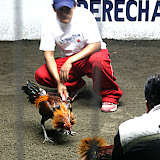 This is a photograph of a watia earth oven that was located in an agricultural field in the Rio Ramis. The image also shows a stick that was used to open up the oven in order to remove the food that was cooked in it.
This is a photograph of a watia earth oven that was located in an agricultural field in the Rio Ramis. The image also shows a stick that was used to open up the oven in order to remove the food that was cooked in it. This image shows a detail of the burned dirt and ash that remain behind after an earth oven is used.
This image shows a detail of the burned dirt and ash that remain behind after an earth oven is used. This image shows a detail of the dirt clods that are used in shaping the oven.
This image shows a detail of the dirt clods that are used in shaping the oven.























